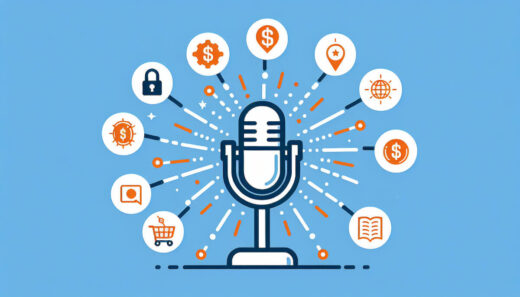Creating a successful podcast requires strong dedication and perseverance. Additionally, a clear understanding of podcasting best practices, backed by solid analytical research, is essential for a successful podcast.
In this article, we will explore five proven podcasting best practices. To unearth these strategies, we have analyzed the top 3500 publicly available successful podcasts across all genres from Apple Podcasts. Our focus was to identify key elements and common characteristics exhibited by these popular and successful shows.
Data Collection Methodology
The data collection and study was conducted in May, 2024. Podcast data was primarily sourced from publicly available RSS feeds. We used a Python script to parse RSS feeds and extract relevant information such as episode titles, release dates, durations, and descriptions and any other required information.
Other information like podcast delivery formats were determined using a combination of manual analysis and automated text classification. A Text classification AI model was used to analyze podcast descriptions and episode information. Each podcast is then categorized into one or more delivery formats.
So without wasting time, let’s dive into the analysis and try to answer some of the key questions for the success of a podcast.
How often do successful podcasts release new episodes?
To perform this analysis for each podcast, we calculated the number of days between the release of two consecutive episodes. we prepared a list of these durations for all of the episodes. we then removed extreme outlier values to reduce noise from the dataset. This cleaned data was then analyzed to categorize the podcast based on its release frequency. we performed the same analysis for all of the podcasts using a python script.

Weekly Podcasts
- New episodes are released after every 6 or 7 days.
- This is the most common release frequency with nearly 54% of all podcasts that we analyzed fall into this category.
- The average consistency was approximately 71%, indicating a high level of discipline to their release schedule.
Daily Podcasts
- New episodes are released on a daily or near-daily basis, typically between every 0 to 2 days.
- There is a considerable preference for this high frequency release as nearly 28% of our analyzed podcasts fall into this category.
- The average consistency was approximately 67%. This indicates strong commitment to their release schedule, even with the challenge of producing new content at a rapid pace.
Fortnightly Podcasts
- New episodes released biweekly, typically after 14 days.
- This is a less common release strategy with only 6% of the podcasts fall into this category. Still it is a notable category.
- The average consistency was fairly low at 43%, suggesting that maintaining a biweekly schedule can be challenging for some podcasts. However, some podcasts within this group exhibited a very high consistency of 90 to 100%, demonstrating their ability to commit to this less frequent release cadence.
The remaining 12% of podcasts do not follow any specific pattern. Some of them have a release frequency that is not very common yet maintain a high level of consistency. However, the data spread was too high to draw definitive conclusions about their release strategies.
| Average Release Frequency | % of Podcasts | Average Consistency | |
|---|---|---|---|
| Weekly Podcasts | 6 or 7 Days | 54% | 71% |
| Daily Podcasts | 0, 1 or 2 Days | 28% | 67% |
| Biweekly Podcasts | 14 Days | 6% | 43% |
Other Notes
- Most genres exhibited similar podcast episode release patterns as the overall sample, with a primary release strategy of weekly episodes followed by daily and biweekly releases.
- The percentage of Weekly Podcasts was notably higher in the “Comedy” and “True Crime” genres, with 73% and 70%, respectively. This indicates that these genres favor a more traditional weekly release cadence.
- The “News” and “Sports” podcast genres showed a distinct pattern, with a significantly higher percentage of daily podcasts at 65% compared to the average of 28%. This deviation highlights the unique nature of these genres, where timely and frequent content updates are crucial to engage listeners.
Practical Tips
- Weekly or daily release schedules are the most popular and successful strategies for podcasts.
- Weekly podcasts are the most common, with a high level of consistency, indicating a traditional and effective approach.
- Daily podcasts showcase a strong preference for high-frequency releases, ideal for time-sensitive content like news and sports.
- Analyze your genre’s patterns; weekly releases are more common in comedy and true crime, while daily releases are more prevalent in news and sports.
What is the ideal duration of a podcast episode?
The ideal duration of a podcast episode can vary depending on its genre, delivery format, and the podcaster’s content delivery style. Additionally, a podcaster might require different amounts of time to explain complex topics or tell engaging stories. Nonetheless, we analyzed the episode duration of all the podcasts in our dataset to identify trends and best practices.

As shown above, overall podcast duration chart follows a normal distribution, indicating a typical bell curve pattern. We also found that nearly half of all episodes (49%) fell within the 30 to 60-minute range. A quarter of the episodes (25%) were shorter, falling in the 0 to 30-minute range, making them concise and easily digestible for listeners on the go. About one-fifth of the episodes (19%) had duration between 61 and 90 minutes, indicating a willingness to delve deeper into topics or offer more comprehensive content.
It’s interesting to note that only a small fraction of podcasts (7%) had average duration exceeding 90 minutes, suggesting that longer episodes are a niche offering that may cater to a specific audience or require a more engaged listener base.
As per our analysis the sweet spot for episode duration falls between 25 to 45 minutes, indicating listener comfort and engagement within this range. However, while an average duration can provide guidance, it’s essential to consider the specific needs and preferences of your target audience.
Although the overall podcast duration chart follows a normal distribution, different genres exhibit varying trends. For instance, in the Comedy genre, the curve skews significantly towards longer duration episodes, suggesting that listeners of comedy podcasts prefer lengthier content. See curve for the Comedy genre,

In contrast, the Fiction, Kids & Family and True Crime genres often showcase a preference for shorter episodes, with the curve skewed towards briefer duration.


The Comparative study of average duration for each genre is as follows,

Practical Tips
- The ideal duration of a podcast episode generally falls between 30 and 60 minutes, with a sweet spot between 25 and 45 minutes to maintain listener engagement.
- However, consider your genre’s specific trends. Comedy podcasts often skew towards longer episodes, while Fiction, Kids & Family, and True Crime genres tend to favor medium-duration episodes.
Where are the successful podcasters hosting their podcasts?
There are numerous podcast hosting platforms in the market, each claiming to offer the best features, support, analytics, reliability, and more. Choosing the right one can indeed be challenging.
This analysis aims to uncover the hosting preferences of popular podcasters to gain insights into their hosting choices. However, it’s important to note that some hosting platforms may be relatively new or have fewer well-known podcasters despite offering competitive features. With that in mind, let’s explore where the best podcasters are hosting their shows.
The following table provides a breakdown of the podcast hosts and their respective shares of top podcasters:
| Podcast Host | % Podcasts Hosted |
|---|---|
| megaphone.fm | 24.6% |
| libsyn.com | 9.3% |
| omnycontent.com | 7.5% |
| simplecast.com | 7.2% |
| art19.com | 5.4% |
| anchor.fm | 5.4% |
| acast.com | 4.8% |
| buzzsprout.com | 4.1% |
| spreaker.com | 3% |
| audioboom.com | 2.8% |
| podbean.com | 2.8% |
| redcircle.com | 2.0% |
Indeed, megaphone.fm is the most preferred choice among top podcasters, with nearly 25% of the top podcasts hosted on this platform. Libsyn comes in second, hosting almost 10% of the top podcasts.
Which genre makes listeners to engage more and give reviews
The average number of podcast reviews per episode can indeed be an indicator of the return on investment (ROI) for creating a single episode. It provides insights into how engaged the audience is and how well the content resonates with them.
A higher number of reviews per episode could suggest a higher level of listener interaction and satisfaction, potentially leading to increased listenership and success for the podcast.
To establish a baseline for further comparison across genres, we determined that the average number of reviews per episode across all genres is 50. This baseline will help us understand how different genres perform in terms of listener engagement and feedback.
The following is the breakdown of the spread of podcasts based on their Apple Podcast reviews:
| Genre | Review per Episode |
|---|---|
| Overall | 50 Reviews / Episode |
| True Crime | 200 Reviews / Episode |
| Society & Culture | 187 Reviews / Episode |
| News | 145 Reviews / Episode |
| Fiction | 68 Reviews / Episode |
| Comedy | 64 Reviews / Episode |
| TV & Film | 56 Reviews / Episode |
| History | 52 Reviews / Episode |
| Religion & Spirituality | 31 Reviews / Episode |
| Music | 25 Reviews / Episode |
| Health & Fitness | 19 Reviews / Episode |
| Kids & Family | 17 Reviews / Episode |
| Technology | 16 Reviews / Episode |
| Arts | 15 Reviews / Episode |
| Science | 15 Reviews / Episode |
| Education | 14 Reviews / Episode |
| Sports | 14 Reviews / Episode |
| Business | 10 Reviews / Episode |
| Government | 5 Reviews / Episode |
| Leisure | 4 Reviews / Episode |
Practical Tips
- Genres with the highest number of reviews per episode include Society & Culture (187), News (145), and True Crime (200). Aiming for content that sparks discussion and engagement similar to these genres can increase listener interaction.
- Fiction (68), Comedy (64), and TV & Film (56) also perform well, indicating that storytelling and entertainment value can drive reviews.
- Genres with lower review numbers include Religion & Spirituality, Music, Health & Fitness, Kids & Family, and Technology. Consider strategies to increase engagement if your podcast falls into one of these categories.
Preferred content delivery method used by successful podcasts
Although, content of the podcast is of utmost importance, but the manner in which it is delivered can also significantly impact listener engagement. This part of our study is somewhat subjective, as content delivery methods can vary and are not always clearly defined or distinguishable.
We manually assigned delivery formats to different podcasts based on their descriptions and episodes, acknowledging that a single podcaster might use multiple content delivery methods within their show. Additionally, podcasts often feature a mix of interviews, narratives, and discussions, making categorization challenging. Despite these limitations, we did our best to draw insights from this analysis:
The most common format of podcast delivery is Conversational and Interview. Almost 37% and 36% of podcasts employ a conversational format and an interview format, respectively. Here is a list of podcast delivery formats along with the percentage of podcasts that utilize each format:
| Podcast Delivery Formats | % of podcast that utilize this format |
|---|---|
| Conversation | 37% |
| Interview | 36% |
| Storytelling | 22% |
| Monologue | 20% |
| Narration | 12% |
| Educational Lecture | 8% |
| Panel Discussion | 4% |
Some other less common delivery formats are Audio Drama, News Reporting, Q&A etc. Please note that since a podcast can adopt multiple formats across different episodes, the sum of the percentages for each format may exceed 100%.
Practical Tips
- Content delivery is an important aspect of podcasting, and the most common formats are conversational and interview styles, with storytelling and monologue also being popular.
- Consider adopting a conversational tone in your podcast to create a relaxed and engaging atmosphere for your listeners.
- Interviews can add variety to your content and provide valuable insights and perspectives from guests.
- Storytelling is an effective way to capture your audience’s imagination and create a memorable listening experience.
- Monologues can be powerful when used sparingly and when you have a clear message or story to convey.



